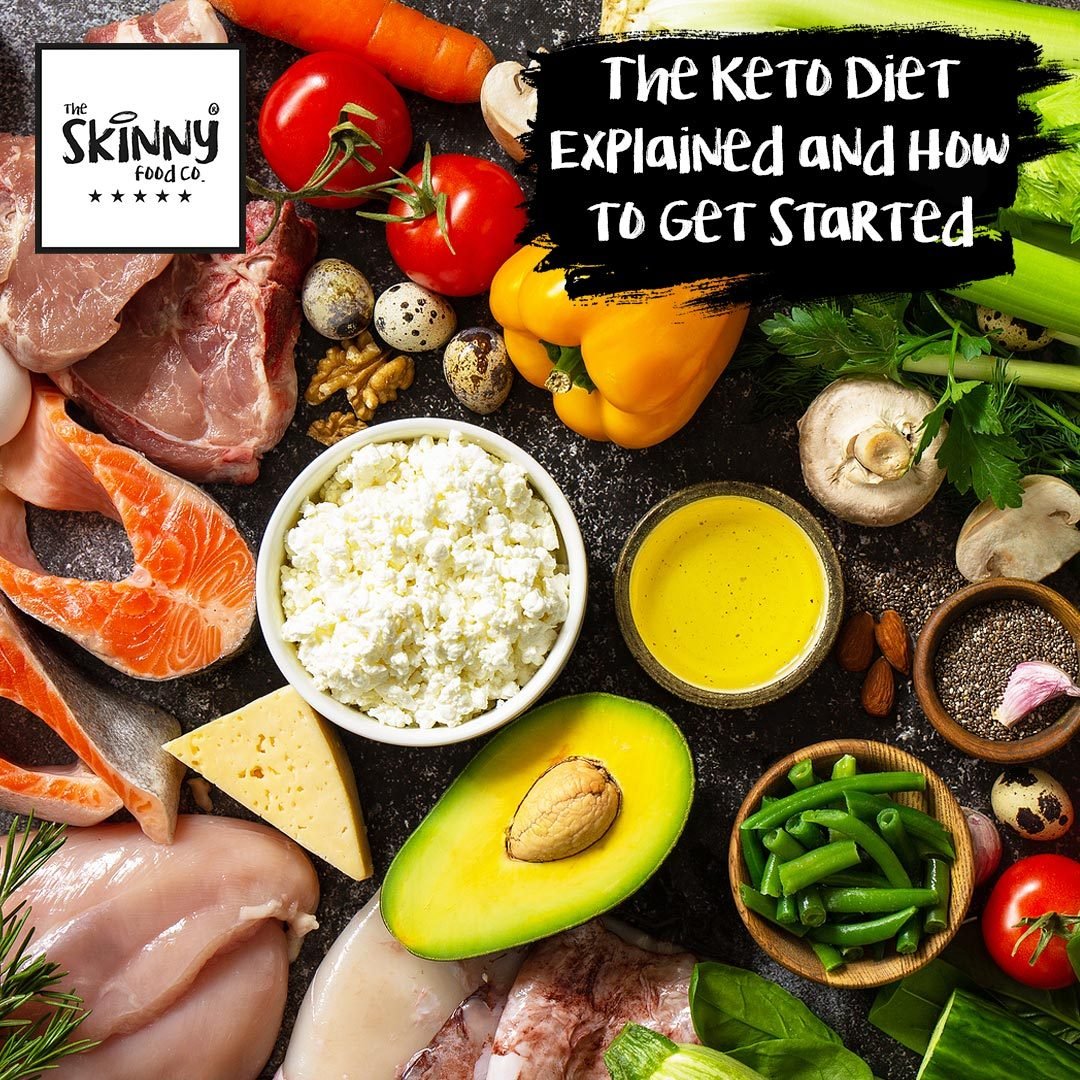The Keto Diet Explained and How to Get Started

The Keto Diet Explained and How to Get Started
What is Keto?
To put it simply, the Keto Diet is a low carb, high fat diet.
'Keto' stands for 'Ketogenic' and the aim of the ketogenic diet is to send your body into a state of ketosis by consuming a very strict low-carb diet.
Normally our bodies use the glucose from carbohydrate foods for energy, but in the absence of glucose a process called ketosis starts.
During a state of ketosis, your body shifts from burning glucose (carbohydrates) into burning and breaking down fats known as ketones. Once your body begins to burn these fats as its primary energy source, it moves away from glucose (carbohydrates) therefore entering a state of ketosis.
What are the benefits?
Although the keto diet isn't for everyone, there are well known health benefits such as reduction in blood sugar and insulin levels. The keto diet is mainly effective in short-term weight loss, type 2 diabetes and childhood epilepsy.
The keto diet is known to be good for short-term weight loss. Using fats as an energy source means you'll be burning a lot of stored fat. Additionally, consuming a high fat content meal, you'll supress your appetite therefore limiting your daily amount of calorie intake.
The keto diet is also good for some diseases including type 2 diabetes. Those who have type 2 diabetes have insulin sensitivity issues and high sugar content in the blood therefore the keto diet works in this case.
There's also scientific evidence that once the body is in a state of ketosis, it has been known to reduce or prevent seizures in children by 50%.
What can you eat?
The standard ketogenic diet consists of 70-80% fat, 20% protein and less than 10% carbs. The diet typically limits carbs to 20 to 50 grams per day.
Low carb foods should be a plenty, such as:
- Low carb veggies e.g. leafy greens
- High fat meats e.g. red meat, steak, ham, sausage, bacon, chicken and turkey
- Fish & Seafood e.g. salmon, trout, tuna and mackerel
- Oils e.g. olive oil, coconut oil, avocado oil
- Nuts & seeds
- High fat dairy e.g. cheese, Greek yogurt, butter, cream
- Avocados
- Eggs
- Berries
- Dark chocolate & cocoa powder
- Olives
- Herbs & spices
- The Skinny Food Co Keto Range

What can't you eat?
High carb foods should be avoided, such as:
- Bread
- Pasta
- Rice
- Most baked goods
- Potatoes
- Root vegetables
- Fruits such as bananas, oranges and apples

Getting Started
Not sure where to begin? Here are some tips on starting keto.
- The power of Google - do your research! The keto diet isn't for everyone, so make sure you've carried out plenty of research to ensure the keto diet is right for you. You should also consult with your doctor prior to starting keto.
- Look into keto resources and online blogs to help with your keto journey. The Skinny Food Co have a couple keto related blogs such as A Beginners Guide to Keto Diets and What I Eat In A Day: Keto Diet with Carla.
- Plan your week ahead, what will you be eating throughout the day? We have blogs on Keto Breakfast Ideas, Keto Snack and Meal Ideas and Keto Drink Ideas to help get those brain juices flowing.
- We also have a Guide to a Vegan Keto Diet blog for those following a plant-based or vegan lifestyle.
- Make a shopping list of what you'll need for the week after doing your research on what you CAN eat - this just makes life a lot easier.
- Check on progress every couple of weeks and adjust accordingly if you're not seeing the results you want.
- Track macronutrients (macros) intake, which are fats, carbs, and protein. These should be kept in balance to keep your body in ketosis. The standard ketogenic diet consists of 70-80% fat, 20% protein and less than 10% carbs. The diet typically limits carbs to 20 to 50 grams per day. Use a Keto Calculator to keep you on track.
- Keep hydrated! It is recommended to ensure you are drinking 2-3 litres water per day. This can aid weight loss, reduce fatigue, improve energy and aid digestion.
What will happen to my body in Ketosis?
The process of reaching ketosis may take 2-4 days or in some cases around a week - during this time your body will experience changes whilst adjusting to your new lifestyle which is why most people experience side effects.
Some label these initial side effects as the 'Keto Flu', which is a group of symptoms that may be experienced during early stages of the keto diet. Symptoms include headaches, a foggy brain, fatigue and nausea.
This diet isn't for everyone - and we recommend thoroughly researching into the keto diet to ensure it is carried out safely and consult with your doctor.
Want more Keto?
We have lots of blog content on Keto related topics:
- Keto Drink Ideas
- Keto Breakfast Ideas
- A Beginners Guide to Keto
- Keto Meal and Snack Ideas
- Keto Dessert Ideas
- A Guide to a Vegan Keto Diet
- What I Eat in a Day: Keto Diet with Carla




